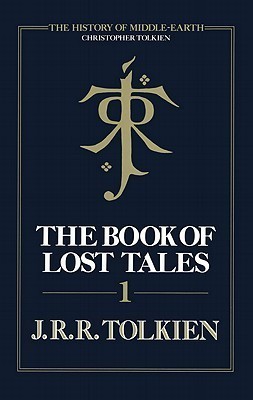The Book of Lost Tales (Part 1)
 For the recent Tolkien Reader Day, I picked up the first of Christopher Tolkien’s ‘History of Middle Earth’ series.
For the recent Tolkien Reader Day, I picked up the first of Christopher Tolkien’s ‘History of Middle Earth’ series.
It takes a bit of unpacking.
This is largely the earliest versions of some of the earliest stories. However, while the initial writing project of these was abandoned, most of these stories weren’t abandoned. Much was later rewritten, and cleaned up versions of that are in The Silmarillion. So, there’s not a lot truly new to the reader to unearth.
And yet, it’s not the same, and I found it largely more comprehensible than much of the comparable sections of The Silmarillion. That may be because Christopher Tolkien is there to hold my hand with lots of commentaries between stories.
And, liking history and process, seeing first/second drafts, and some history of the thinking behind these stories is of interest to me. Reading-wise, the main problem is “The Cottage of Lost Play” is a slog. After that, I found the narrated stories of the pre-history of the world, and the interstitial bits worked very well for me, and I actually enjoyed reading those parts.
I think one of the most interesting things is that all along, The Hobbit and LotR are supposed to be happening in some long-lost past of our world. But frankly, you can’t tell, there’s no real connection. Here, this conceit is still at the surface, and Eriol is just enough to tie this large structure to our Earth. Also, some of the echoes of Germanic and Nordic myth are stronger here, and it feels just a bit more connected those long-gone and overgrown signposts. In a real sense, LotR indeed has nothing to do with our past. I started in some of the same places (here), and then grew in its own direction, and became more than that simple concept.
In a general reading sense, it’d be hard to recommend this. Certainly not in any pure entertainment sense; stick with the later, polished works for that. But, there is enough magic here that if you’d like to take a look behind the curtain, this is a good exploration of the start of J.R.R. Tolkien’s quest.

Discussion ¬